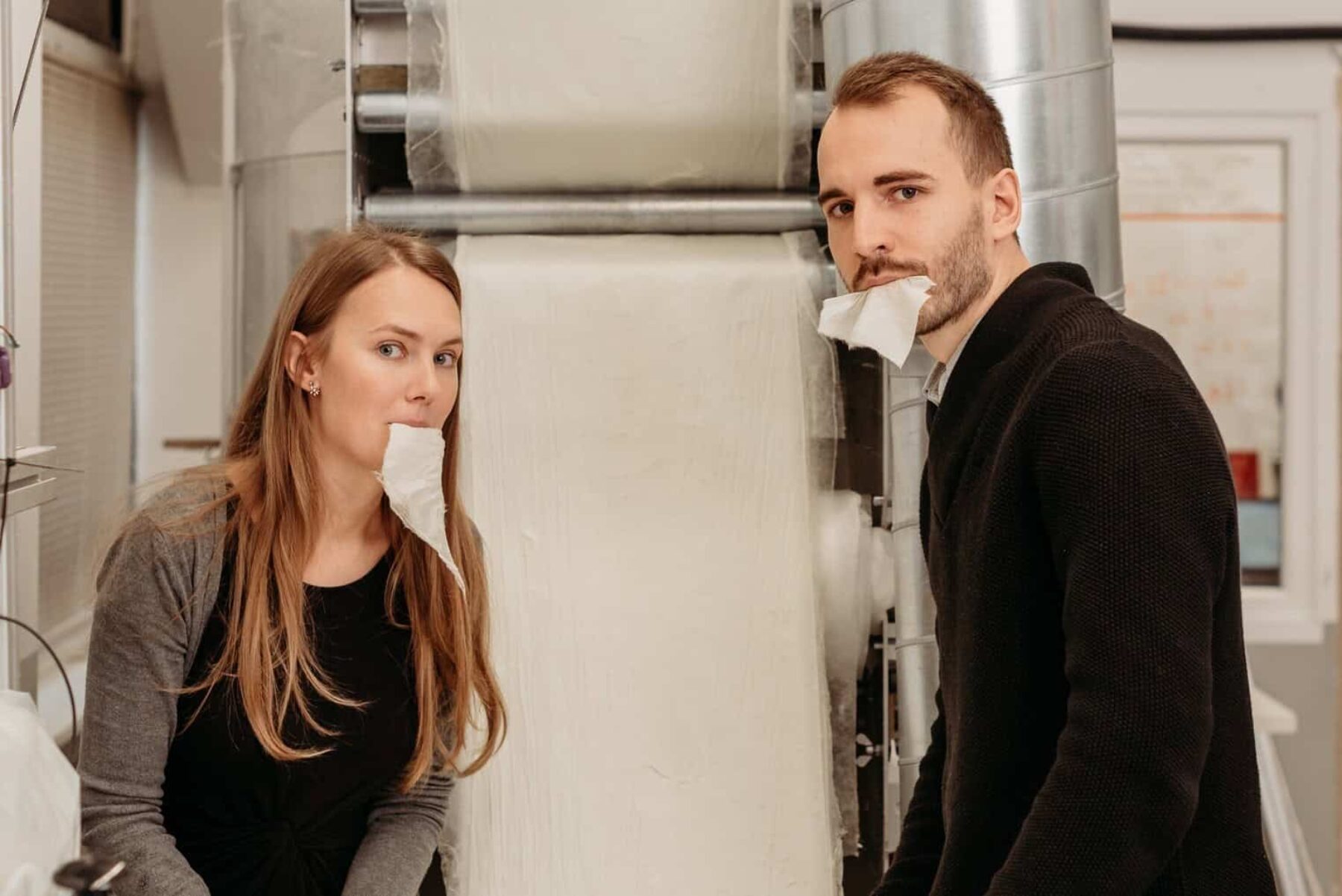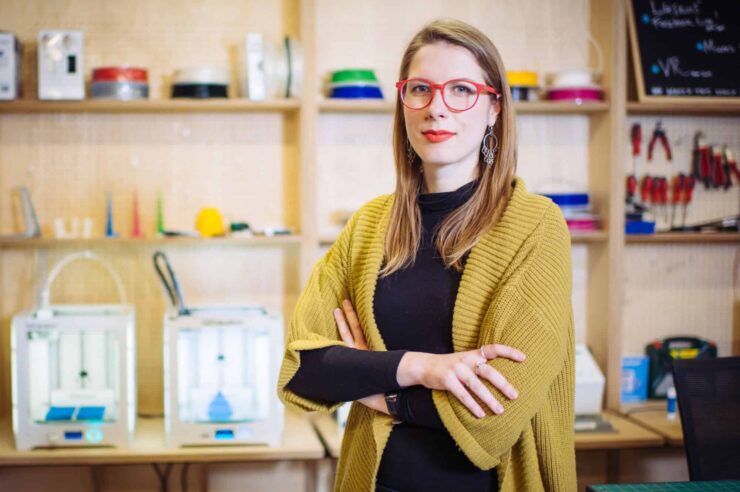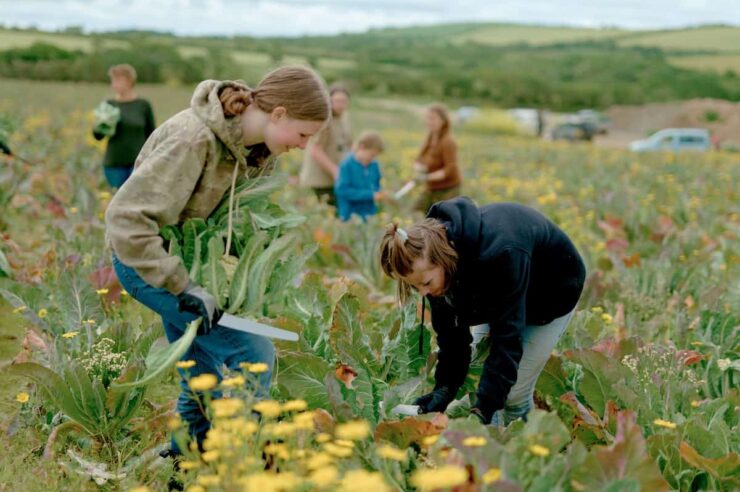After much anticipation, the US has just approved the sale of lab-grown meat. But it's one of only a handful of countries to do so. Positive News speaks to the CEO of a company pioneering this innovation, on when it might appear on European plates
It looked like the kind of cheap burger served up at a roadside greasy spoon, but when Cornish chef Richard McGeown slid his puck of ground beef into a sizzling pan of oil back in 2013, it marked a moment in culinary history.
McGeown’s patty was the first in the world to be grown in a laboratory and – at an eye-watering cost of £215,000 – by some margin also the most expensive.
But that was almost a decade ago, and while McGeown’s stunt served as a tantalising taste of things to come, the world is still waiting for the sustainable food innovation that could help save our planetary bacon. Scientists have done a fine job of selling us the idea of lab-grown meat, so why has it still not found its way into our kitchens?
“I’d say cultured meat is way more advanced than most of the public knows,” enthuses Märt-Erik Martens, CEO of Estonian startup Gelatex, a major player in this emerging market. “Companies are ramping up; they have pilot production facilities either being set up or already operational. The key components are more or less developed and in place. But you have to remember – you can’t look at this in the same way as plant-based alternative meats, because it’s totally different. It’s way more complicated.”
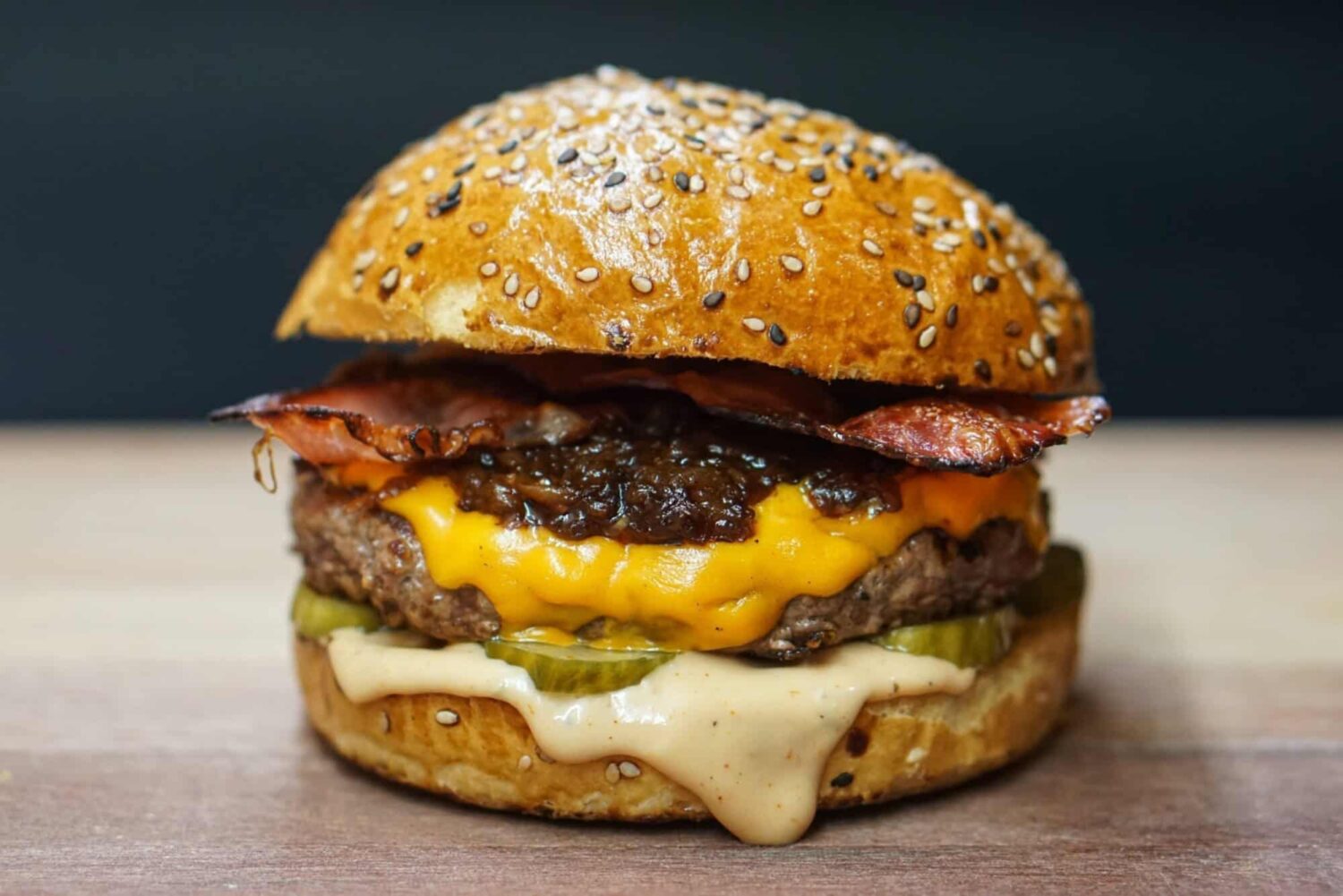
Does lab-cultured meat have the potential to save our planetary bacon? Image: Amirali Mirhashemian.
Gelatex won the 2019 Green Alley Award – an award scheme that nurtures circular economy startups – with a unique synthetic leather spun from gelatine nanofibres. Two years ago, it pivoted to help cultured meat producers overcome a major manufacturing headache.
Lab-grown meat is made by growing muscle tissue that is cultivated from a tiny sample of stem cells harvested from a live animal. Using plant-based polymers in place of gelatine, Gelatex created an edible ‘nanofibre fabric’, which provides a cotton candy-like textural ‘scaffold’ for these cultured meat cells. With no scaffold, the finished dish would look less like a prime slab of sirloin, and more like a mushy dollop of Brussels pâté.
Although Martens is reluctant to name names, he says he is working with eight out of 10 of the world’s top cultured meat producers. But while his nanofibres have been used successfully to prototype lab-grown chicken fillets and shellfish, these novel foods need the rubber stamp of government approval before they can be sold to the public.
“Regulation is the main challenge,” says Martens. “This is a completely new approach to producing meat, so you can’t take regulations from conventional agriculture and apply them to cultured meat products. Luckily this is being worked on in a number of different regions.” Most recently, the US, where regulators have just declared lab-grown meat safe to eat in a move being called “seismic and groundbreaking“.
Singapore has also been leading the way. The south-east Asian country greenlit the sale of cultured meat to the public in 2020, and US startup Eat Just trialled its lab-grown chicken bites there the following year. They were priced at a loss-making $16 (£14.30) a portion, around a third of the cost of growing a single nugget.
And therein lies another barrier.
Price parity with conventional meat can only be realised by scaling up production, and the investment manufacturers need to supersize key technologies – such as the bioreactors in which meat is grown – will only come following the approval of food regulators.
“It’s like the chicken and the egg,” Martens quips. “Facilities need to be able to produce tonnes of product. The technology is almost there, but the scale isn’t. This is tissue engineering on an industrial scale, something that’s never been done before.”
Regulators in the US, Israel and China are hot on Singapore’s heels. In the near future, perhaps within the next year or so, Martens believes we’ll begin to see cultured meats appear in select, exclusive restaurants, priced at a premium.
“As they should be, because they really take a lot of effort to make,” he notes, adding that it could be another four to five years before we’re adding mass-produced cultivated meats to our supermarket trollies.
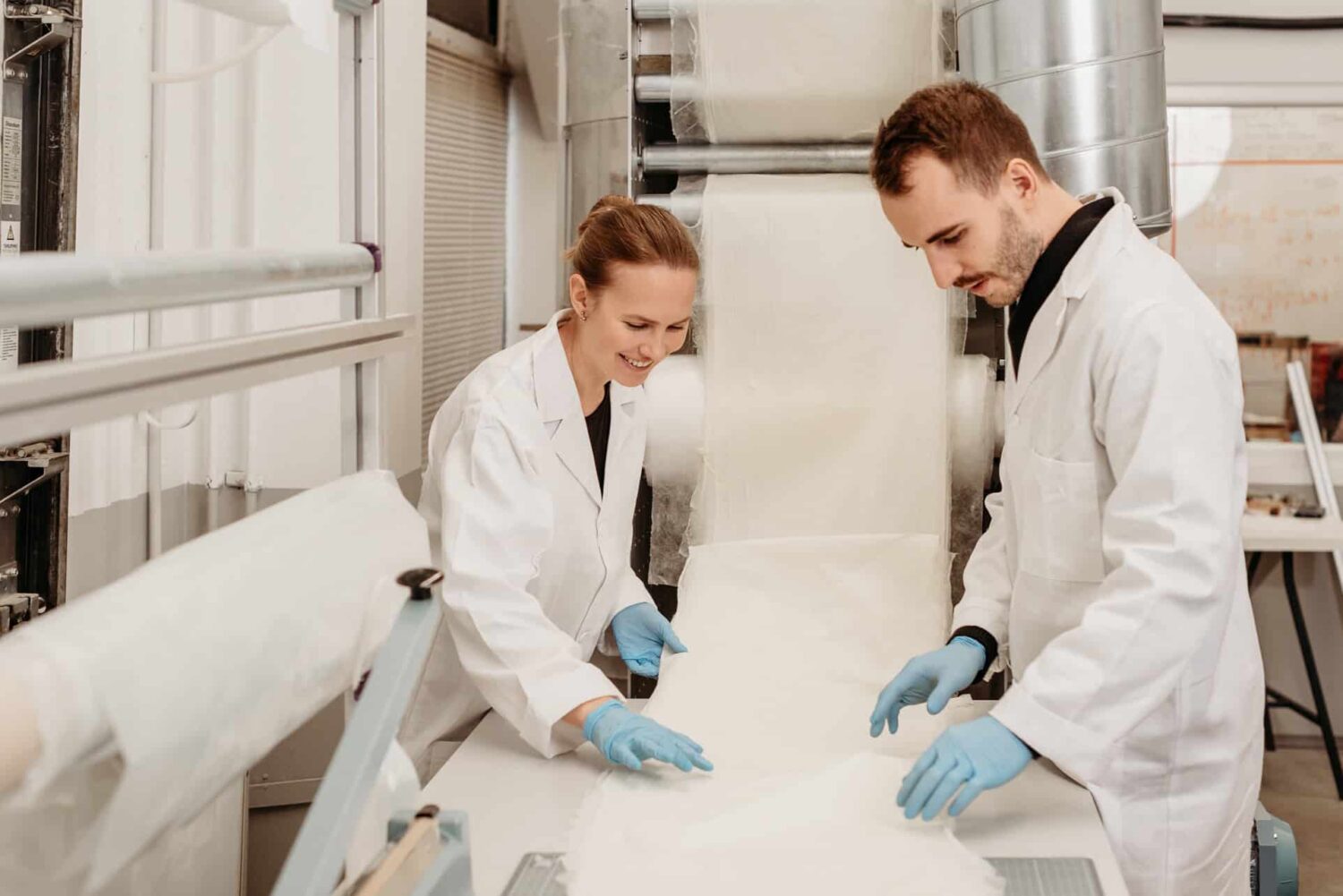
Gelatex co-founders Mari-Ann Fonseca and Märt-Erik Martens inspect their edible 'scaffolding'. Image: Gelatex.
Conventional mud-and-wellies farmers are understandably wary of being elbowed out by the rapid advance of dazzling new technology. Environmentalist George Monbiot provoked rancour with his book, Regenesis, which lauds another lab-based solution for growing food proteins – precision fermentation. Instead of culturing stem cells, it uses genetically modified yeasts and bacteria to grow lookalike meat analogues.
However some proponents of cultured meat insist farmers will still have a vital role to play in this brave new world. Seren Kell, science and technology manager at the Good Food Institute think tank, is one of them.
“Cultivating meat cells still needs input from agriculture – crops like tobacco, soy and chickpea are broken down and used as ingredients in cell culture media,” she says. “Farmers can and should play a key role in the transition towards what would be a more sustainable food supply.”
Inevitably, growing crops to produce bundles of cells instead of entire animals means reducing the burden of agriculture on overall land use.
“That’s a huge opportunity,” says Kell. “You’re freeing up land for things like carbon capture and storage, rewilding or more nature-friendly practices like regenerative and organic agriculture. Farmers can be a part or lead on any of those things – but do need governments to support them, help them adapt and identify what that role could look like.”
Farmers can and should play a key role in the transition towards what would be a more sustainable food supply
The prize, says Martens, is “the holy grail of meat alternatives” in terms of sustainability.
Half of the world’s habitable land is used for agriculture, and over three-quarters of that is turned over to livestock production – either for grazing land or to grow animal feed – while meat accounts for 60 per cent of all food industry greenhouse gases. By contrast, cultured meat could, in theory, be grown in a laboratory powered by renewable energy, freeing up millions of acres.
At the same time, the sterile conditions needed to grow meat cell cultures would largely do away with the need for the vast quantities of antibiotics currently pumped into farm animals, estimated at almost 70 per cent of the global total.
“If you think about it, there hasn’t been a major innovation in meat production for 10,000 years, not since we began herding animals instead of hunting them,” says Martens, as he embarks on a €15m (£13.2m) funding round to finance a pilot production facility.
“What this unlocks when we have the scale is the most sustainable meat in the history of humankind.”
Or at least, one of a mix of solutions for a more sustainable food future.
Main image: Gelatex co-founders Mari-Ann Fonseca and Märt-Erik Martens. Credit: Gelatex.
